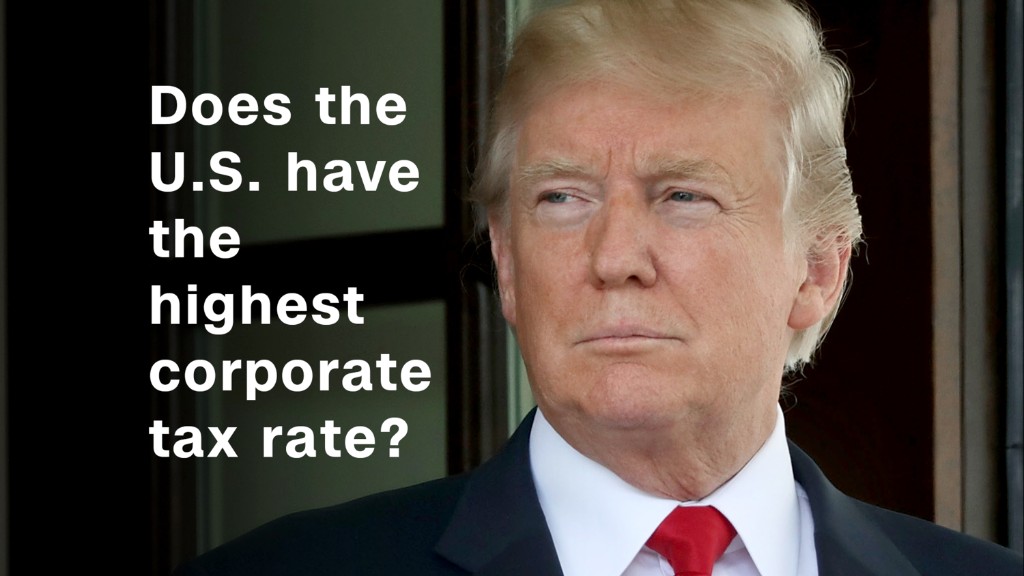
On Wednesday, President Trump twice said the United States is "the highest taxed nation in the world."
No, it's not.
In fact, Trump has made the very same blanket claim at least 18 times before, according to the Committee for a Responsible Federal Budget.
Here are just a few ways the United States trails other countries in terms of taxation.
Total revenue collected
The United States in 2015 collected $14,794 per capita in tax revenue, according to data from the OECD, which is a group of 34 democracies with market economies.
That's well below what many other OECD members collected. Luxembourg took the top spot, with $42,655 collected per person. Norway came in second, collecting $30,140.
As a share of the economy, the U.S. collected 26.4% of its gross domestic product in total revenue, well below the 34.3% OECD average. By that measure, Denmark takes the top spot at 46.6%.
Individual taxes
Many other economies impose a top income tax rate -- factoring in both the national and local tax bite -- that's well above the highest combined individual income tax rate in the United States. And often the top rate in other economies hit people much lower down the income scale than those paying the highest tax rate in the United States.
For example, in 2012, the highest U.S. combined rate was 44% and it applied to income over $400,000. But in Denmark, the top rate was 60% and applied to income over $55,000.
What's more, once tax breaks are taken into account, the federal income tax burden on average Americans is lower than most expect. The majority of Americans effectively pay less than 15% of their total income in federal taxes. And close to 40% end up with zero income tax liability every year.
Corporate taxes
Among countries and tax jurisdictions worldwide, the U.S. corporate tax rate ranks third, behind the United Arab Emirates and Puerto Rico, according to the Tax Foundation.
Trump is on firmer ground when he says -- as he did Wednesday -- that the U.S. corporate tax rate is the highest "in the developed world."
The top U.S. corporate rate is 35%. When combined with state and local business taxes, it's just over 39% on average. That's higher than the average statutory rates of countries in the OECD. It's also higher than that of the 15 largest economies in the world, according to the Congressional Research Service.
But that doesn't tell the whole story.
Corporate tax revenue only accounts for about 2.2% of U.S. GDP, which is below the OECD average. And as percent of total taxes collected, the U.S. has been roughly on par with the OECD average in recent years.
In terms of actual tax burden, the Government Accountability Office found that once various tax breaks are taken into account, large profitable U.S. companies paid, on average, about 14% of their pretax income in taxes in 2012 -- or 22% once foreign, state and local taxes are included.
And about a fifth of those companies owed no U.S. taxes at all. One factor that can contribute to a company's zero tax liability is if it has foreign profits that it leaves overseas, because under the current system U.S. tax can be deferred on offshore earnings until that money is repatriated.
Still, calls to lower the U.S. corporate rate are widespread because so many other countries that compete with the United States for business have lowered their statutory rates.
"Our high marginal tax rates distort incentives, but we have so many tax breaks in our code, the high rate doesn't translate to paying more overall in taxes. It mainly means we collect our taxes in a highly-complex and often inefficient manner, which is why there is so much we can do to improve our tax code," CRFB president Maya MacGuineas has noted.


